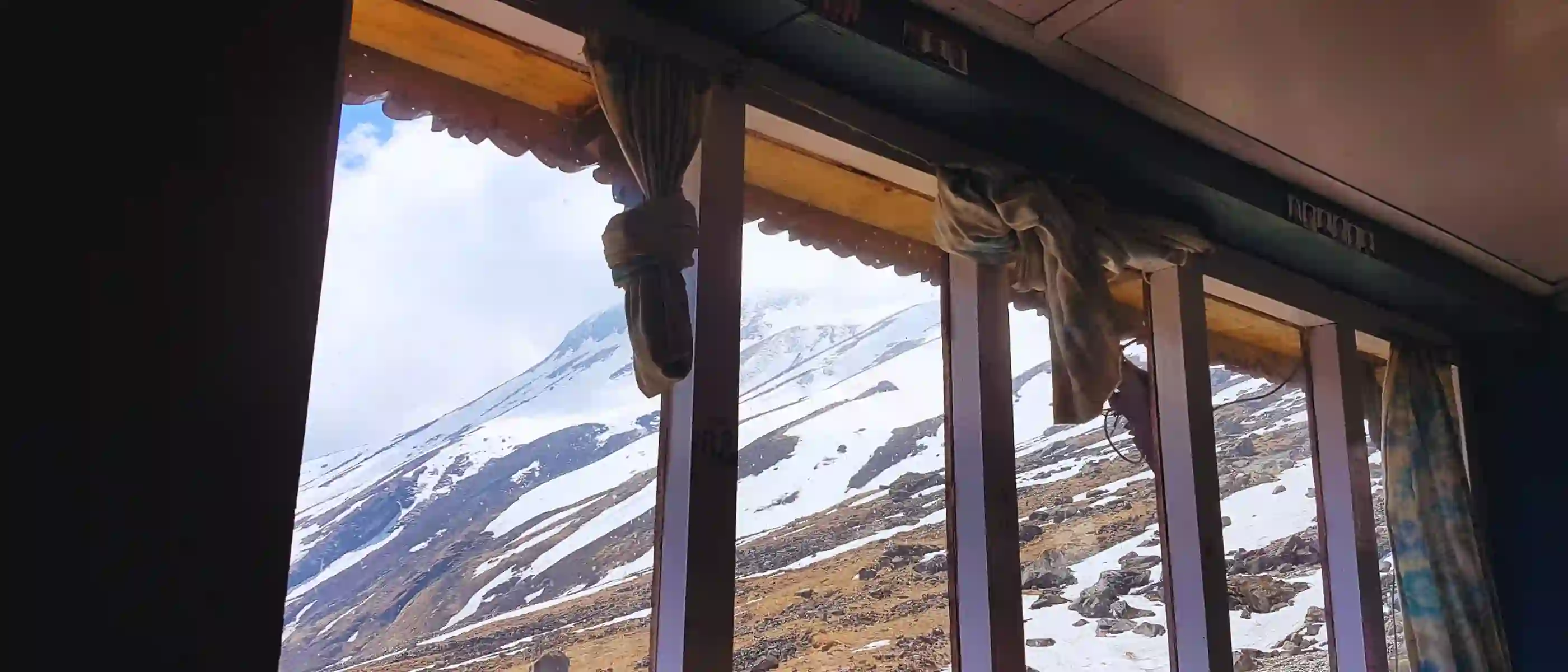Mount Everest 2025 Guide: Facts, Culture, History, Trekking
Sherkha
May 20, 2025
Mount Everest is 8,848.86 meters tall (29,032 feet). It is the world’s highest peak. Located in Nepal’s Himalayas, it sits on the Nepal-Tibet border. In Nepali, it is Sagarmatha, meaning “Sky Head.” In Tibetan, it is Chomolungma, or “Mother Goddess.”
This 2025 guide covers Everest facts, Sherpa culture, history, and top sights like Gokyo Lakes. Plan your Everest Base Camp trek or explore its story with insights from Himalayan locals. Perfect for travelers, adventurers, and curious minds!
We plan your perfect holiday
Embark on your Nepal holiday with confidence, guided by our expert travel specialists who offer the right information, the right trip, and the right travel services.
Geography and Geology of Mount Everest
Mount Everest is at 27.9881°N, 86.9250°E in the Mahalangur Himal range. It marks the Nepal-Tibet border in Nepal’s Solu-Khumbu and Tibet’s Tingri County. A 2020 Nepal-China survey set its height at 8,848.86 meters, the highest point above sea level.

How Did Everest Form?
Everest formed 60 million years ago. The Indian plate hit the Eurasian plate. This pushed up the Himalayas. The peak’s limestone top was once a sea. It holds 400-million-year-old sea fossils.
Why Is Everest the Highest?
Everest’s height comes from plate push. This beats wearing down. K2 is 8,611 meters tall. Everest is higher. It draws adventurers to Nepal’s Himalayas.
|
Fact |
Details |
|
Height |
8,848.86 m (29,032 ft) |
|
Location |
Nepal-Tibet border |
|
Names |
Sagarmatha, Chomolungma |
|
Geological Age |
60 million years |
Cultural Significance of Mount Everest
Mount Everest is holy to Sherpa and Tibetan people. Its names show deep respect:
✔️ Sagarmatha: Nepali for “Sky Head.” It links to divine ideas.
✔️ Chomolungma: Tibetan for “Mother Goddess.” It is a Buddhist figure.
Sherpa Culture and Traditions
Sherpas see Everest as a holy guard. They hold puja ceremonies to honor its spirit. This ties to their Buddhist faith. Tengboche Monastery, near Everest, hosts the Mani Rimdu Festival (October 28–30, 2025). The festival has dances and prayers. It pulls in visitors to Nepal’s Himalayas.

History of Mount Everest
Mount Everest, at 8,848.86 meters, is the highest peak. Its story includes discovery, climbs, and Sherpa culture.
Early Recognition
Sherpas and Tibetans saw Everest as holy for centuries. Its world story began in the 1800s. British surveys in India found it.
Discovery as the Tallest Peak (1852)
In 1852, a British survey named Everest the highest peak. Called Peak XV at first, it became a world wonder (Great Trigonometrical Survey).
|
Year |
Height Reported |
Source |
|
1852 |
29,002 ft |
British Survey |
|
1955 |
29,029 ft |
Indian Survey |
|
2020 |
8,848.86 m |
Nepal-China Survey |
Naming Mount Everest (1865)
In 1865, Andrew Waugh named it Everest for George Everest, a surveyor. In 1956, Nepal chose Sagarmatha to honor its culture. Baburam Acharya suggested it. Tibetans use Chomolungma. Both names are known.

Early Climbs (1900s–1920s)
In the 1900s, Westerners aimed to climb Everest. The Royal Geographical Society and Alpine Club planned trips.
1921 British Expedition
In 1921, Charles Howard-Bury led a team. They mapped a path from Tibet. George Mallory, a top climber, joined. He became famous.
1922 and 1924 Expeditions
In 1922, Charles Bruce’s team used oxygen. Cold and snow slides stopped them. In 1924, Mallory and Andrew Irvine tried for the top. They vanished near it. Did they make it? No one knows.
First Confirmed Climb (1953)
On May 29, 1953, Edmund Hillary and Tenzing Norgay reached the top. Hillary was from New Zealand. Tenzing was a Nepali Sherpa. They climbed the southeast ridge. Their feat showed human strength. Tenzing became a Nepal hero. By 2024, over 6,000 climbs happened (Himalayan Database).
Post-1953 Milestones
The 1953 climb opened Everest to all. Key moments include:
✔️ 1960: Chinese team climbed from the north. Some doubt it due to night.
✔️ 1975: Junko Tabei, first woman, summited.
✔️ 1978: Reinhold Messner and Peter Habeler climbed with no oxygen.
✔️ 1980: Messner climbed alone.
Notable Everest Records
Everest sees great feats:
✔️ Most Climbs: Kami Rita Sherpa, 30 by 2024.
✔️ Youngest: Jordan Romero, age 13, 2010.
✔️ Oldest: Min Bahadur Sherchan, age 76, 2008.
✔️ First Blind: Erik Weihenmayer, 2001.
|
Record |
Person |
Year |
Details |
|
Most Climbs |
2024 |
30 climbs |
|
|
Youngest |
Jordan Romero |
2010 |
13 years old |
|
Oldest |
Min Bahadur Sherchan |
2008 |
76 years old |
|
First Blind |
Erik Weihenmayer |
2001 |
Vision-impaired |

Top Sights Around Mount Everest
The Everest area has stunning spots. They mix nature, Sherpa culture, and history near the highest peak.
1. South Base Camp (Nepal)
South Base Camp is at 5,364 meters in Nepal’s Solu-Khumbu. It is a top spot for the Everest Base Camp trek. You see Everest’s top up close. Below the Khumbu Icefall, it has bright tents and prayer flags. Sherpas, climbers, and visitors share tales over chang (barley beer). Reach it by flying to Lukla and hiking.
2. Gokyo Lakes
Gokyo Lakes are six lakes at 4,700–5,000 meters. They shine with blue water. The Ngozumpa Glacier feeds them. They reflect Everest and Cho Oyu (8,188 m). Gokyo Cho is the biggest lake. It is great for photos. Gokyo Ri, at 5,357 meters, shows Everest clearly. Hike from Namche Bazaar to lodges with momo dumplings.
3. Tengboche Monastery
Tengboche Monastery is at 3,867 meters. It is the heart of Sherpa culture. Built in 1916, it has art, Buddha statues, and Everest views. The Mani Rimdu Festival (October 28–30, 2025) has dances and prayers. Join morning prayers or see old books.
4. Kala Patthar
Kala Patthar is a hill at 5,545 meters. It gives the best Everest view. Its name means “black stone.” It has dark rock by snowy peaks. Hikers from Gorak Shep reach it fast. Sunrise shows Everest in gold light. It is a top photo spot.
5. Namche Bazaar
Namche Bazaar is at 3,440 meters. It is a busy Sherpa town. It offers Everest views. Markets sell yak wool shawls and prayer beads. The Sherpa Culture Museum shows Tenzing Norgay’s gear. Saturday markets share Sagarmatha tales.
6. Khumbu Glacier
Khumbu Glacier is a 12-km ice river from Everest. See it from South Base Camp. Its ice towers and gaps are striking. It moves 1 meter a day. It feeds streams. It shrank 1.3 km since 1992 due to heat (Nepal Tourism Board).
7. Sagarmatha National Park
Sagarmatha National Park is a UNESCO site since 1979. It covers 1,148 km² around Everest. It guards snow leopards, tahrs, and 118 bird kinds. Paths go by flower groves and Sherpa towns like Khumjung. Monasteries show Buddhist ways.
8. Khumbu Icefall
Khumbu Icefall is near South Base Camp. It is an ice maze from the Khumbu Glacier. Its 30-meter ice towers shine like glass. Watch from safe spots due to danger. Its moves show climate change in the Himalayas.

Plan Your Everest Base Camp Trek in 2025
Ready for a Himalayan adventure? The Everest Base Camp trek is a top choice. Fly to Lukla, then hike 12-14 days through Sherpa villages. See Everest, Lhotse, and Nuptse. Spring (March-May) and fall (September-November) are best. Book with a trusted travel partner.
By D. Prakash, a travel enthusiast and manager who pairs a passion for exploration with dynamic leadership, thriving on discovery in every journey.




